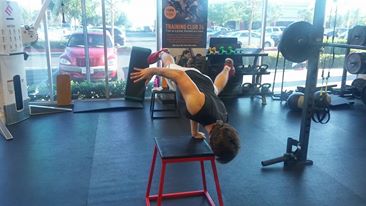
When it comes to the concept of progression, playing with time under tension yields impressive physical results, and messing around with loading parameters can make even the meek strong like bull, but for my money, my favorite type of progression is increased movement complexity. Few things turn my crank like taking a movement pattern and tinkering with it.
In an industry where it is appropriate to ask, “Is the juice worth the squeeze?” movement complexity is the strainer seeking out the pulp.
Every time I see someone doing lunges, my mind cooks up a handful of ways to make those lunges more challenging and intricate. Hell, just about everyone can do lunges! Let’s find ways to make them really interesting! (I’m a real treat at dinner parties.)
Seriously, though, when it comes to progressing a movement, other methods have incredibly detailed and measurable results that can come with their introduction. Grafting complexity on to a movement takes us into the realm of nuance.
Progression that involves complexity starts getting into fuzzy math, and questions that involve the esoteric standards of movement quality. My preferred method of progression demands adaptations that are global; they start from the CPU and travel the entirety of the neural network. Train with me long enough and you will start to move like an athlete.
You will FEEL the difference.
And therein lies the subtle beauty of learning increased complexity of movement, and of learning to own those movements.
People who move well walk differently. They hold themselves differently.
Think back to biology in school and you will recall that there are three planes of human movement:
– The sagittal plane, which dictates movement forward and back, is ubiquitous in training. Everything from bicep curls to squats are done in the sagittal plane. It bores me.
– The frontal plane relates to movement from side to side. Like someone with a job who’s got a mortgage to pay at a riot, movements in the frontal plane are a rarity in the gym. Aside from medial deltoid raises and lateral lunges, the frontal plane is a distant second. I cry for the frontal plane.
– Then there is the transverse plane, which dissects the upper and lower halves of the body. This is where power, athleticism, and grace live. Rotation, anti-rotation, twisting, and all the permutations of gait patterns find their home in the transverse plane. Any movement that begins in one big toe and ends in the opposite hand is transverse plane dominant. And I love it.
A simple example? For kettlebell practitioners, the single leg bridge is a fairly remedial exercise in the sagittal plane. But the moment a twist and reach with the opposite hand is introduced, it becomes a true challenge. That, my friends, is progression via complexity.
While manipulating loads or tweaking the time spent under tension are far more popular (and easier. And BORING!) ways to introduce progression into one’s training program, I encourage my people to look for the hidden gems that can be found in increasing complexity. The brain is the biggest calorie burner in the body.
Why not supercharge it by challenging it?

Recent Comments